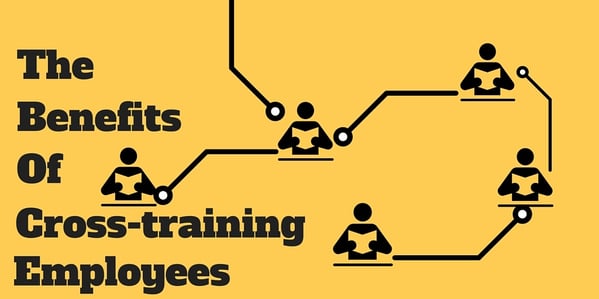
Many companies use cross-training for a variety of reasons within their organizations. Whether due to a predictably busy time for a department, if an employee is absent due to illness, if it takes longer than expected to fill a position after a staff member resigns or retires, or as part of a crisis plan. Cross training becomes even more important if hiring outside labor is not feasible; the position may require specialized knowledge, be only for a short time, or may involve handling sensitive information. Plus, it is far less expensive and labor intensive than hiring new staff members to perform the tasks. Not only is this opportunity beneficial to the organization, it gives employees a chance to learn about a different position or part of your business.
Cross-training helps increase employee flexibility, presents opportunities for individuals to grow with a company, and is less expensive than hiring new staff members to perform the tasks.
The Game Plan
Before starting a cross-training program at your organization, you must develop a solid game plan that will include details of how the training and how it will be put into practice. Your first step should include acknowledging which area of production is most in need of cross-trained employees. Next, determine if this position requires certain skills or abilities. Third, identify the employees who possess the needed skills and knowledge, or may be willing to get further trained to make up for any shortcomings. Using performance reviews to identify skill sets of an employee that could be applied elsewhere in your organization. This step makes even better use of this standard business practice.
Once whatever training process is complete and the employees can start working on different tasks, be sure to include them on any updates to procedures, staff meetings, or other important information to minimize time lost due to old information.
The Tally of Cross-Training Benefits
- Employees gain confidence in that they are becoming a more important part of the organization. This also gives them a diversified work experience.
- If an employee leaves the organization or has a length of absence, the interruption that could be caused is minimized as the cross-trained employee(s) can easily alleviate the stress felt by a department while a position is vacant.
- Cross-training improves morale in that it breaks up the monotony felt by many employees when they do the same thing every day.
- It reinforces team-building in allowing employees to become involved with one another in supportive roles.
- You break down the department silo. Employees become more comfortable staff in other departments negating the “us versus them” attitude that is common in many workplaces.
- The organization can move employees who may have been lacking in their current position. By being moved, they may be rejuvenated and perform at a higher level.
Not all of your staff may be enthusiastic or able to be cross-trained, but most will be excited to engage in new activities and mix up their daily routine. With all of this benefit plus the rewards to the company of keeping production moving even in times of need, makes cross-training your employees a game winning strategy.



